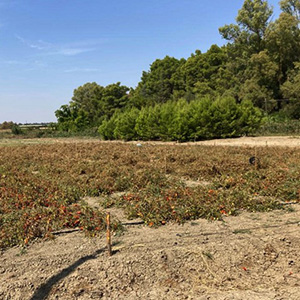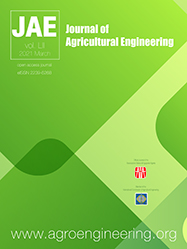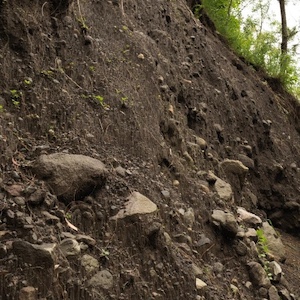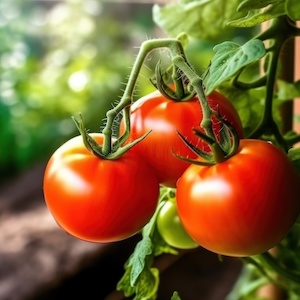Comparing actual transpiration fluxes as measured at leaf-scale and calculated by a physically based agro-hydrological model

All claims expressed in this article are solely those of the authors and do not necessarily represent those of their affiliated organizations, or those of the publisher, the editors and the reviewers. Any product that may be evaluated in this article or claim that may be made by its manufacturer is not guaranteed or endorsed by the publisher.
Authors
The main purpose of this paper is to compare the actual transpiration rates from tomato crop, as measured at leaf scale and estimated by a macroscopic approach in an agro-hydrological model, named FLOWS, under variable soil properties and water availability. To this aim, sixteen plots were cultivated with tomatoes in Metaponto, Southern Italy. Soil hydraulic properties (SHP) were obtained using a fast in-situ characterization method. Leaf-area index (LAI) was measured using a leaf-area meter. SHP and LAI were then used in the physically-based FLOWS which allowed calculating the macroscopic transpiration rates, Ta,m. Single-leaf transpiration rates, Ta,l, and stomatal conductance, gs,l, were measured in situ. For comparing with Ta,m, gs,l was upscaled by Big-Leaf approach to canopy scale stomatal conductance, gs,c, which was applied to Penman-Monteith model to obtain the canopy-scale transpiration, Ta,c. Finally, multiple linear regression (MLR) was used to find the statistical relationship between Ta,m and Ta,c, and the SHP and gs,c. Results showed that the macroscopic approach smooths the spatial variability of transpiration rates. Ta,c increased with the saturated water content, θs, and the slope of the water retention curve, n, while Ta,m decreased with increasing θs and n. MLR improved significantly by introducing gs,c to predict Ta,m.
How to Cite

This work is licensed under a Creative Commons Attribution-NonCommercial 4.0 International License.














